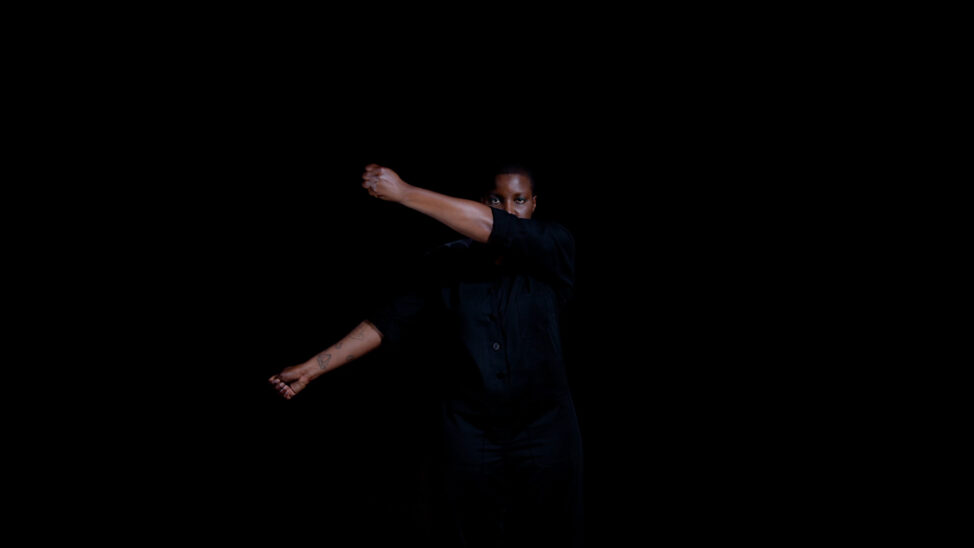Belinda Kazeem Kamiński
AT
-

Untitled, K. T. C. I. - 2022 - Video still, video, color, silent, 5' -

In Search of Red, Black, and Green - 2021 - 3 C-prints on Alu-Dibond, 80 x 119.3 cm each
Belinda Kazeem-Kamiński is a writer, artist, and scholar. Rooted in Black feminist theory, she has developed a research-based and process-oriented investigative practice that often deals with archives, specifically with the voids in public archives and collections. Interlacing the documentary with the fictional, her works manifest themselves through a variety of media and dissect the present of an everlasting colonial past: a past without closure.
O.T., K.T.C.I, 2022
With energetic and strong movements, her fists are up and down, up and down, and in turn going sideways as the performer recreates the first letters of the sentence “Kill The Cop Inside” in the video Untitled, K. T. C. I. (2022). Inspired by the radical dramatist Augusto Boal, who worked extensively on developing techniques against internalized oppression, the work is focused on signals of awakening, where the body is the first portal of communicating liberation. Here, the killing of the inner cops is a performative practice; a practice that has to be continuously repeated.
Cindy Sissokho, from the exhibition text of the solo exhibition Belinda Kazeem-Kamiński, Seven Scenes, Camera Austria, Graz, AT (2022).
Credits: Script & Performance: Belinda Kazeem-Kamiński /Director of Photography: Sunanda Mesquita / Camera Assistant: Nick Prokesch / Dramaturgy & Editing: Sunanda Mesquita, Belinda Kazeem-Kamiński / Color Grading & Postproduction: Sunanda Mesquita, Nick Prokesch / Make Up: Sunanda Mesquita / Best Boy & Technical Support: Nick Prokesch / Line Producer: Liesa Kovacs
In Search of Red, Black, and Green, 2021
The protagonist of the three-part photographic series In Search of Red, Black, and Green (2021) looks for something that is out of frame, beyond the viewer’s gaze, concentrating on what lies ahead and is not visible to the audience. The three pictures depict the model in almost the same position, but with different colored backgrounds: red, black, and green. This tripartite color combination could be read as a visual code, echoing the flags of some African nation-states established in the wake of decolonization. The three equal horizontal bands, going from top to bottom, of the same red, black, and green also constitute the tricolor flag variously referred to as the Pan-African flag, the Black Liberation flag, and the African American flag – multiple names for one symbol of the liberation of Black people. The artist uses these three colors as coded and powerful reminders of the liberatory resistance struggles of the African diaspora, and for Black freedom in general, which is still “an
unfinished project”, as African American thinker and theorist Saidiya Hartman writes. In that sense, Belinda Kazeem-Kaminski’s artwork underlines the urgent need to hold on to what drove and still drives emancipatory and liberatory Black projects: the insistence on imagining, practicing, thinking, and living toward what it would mean to be truly free.
(text by Anne Faucheret & the artist)